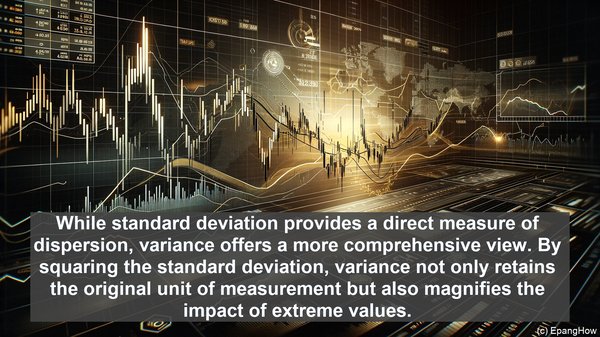Introduction: The Crucial Role of Statistical Measures in Portfolio Theory
Hello and welcome! When it comes to managing investments, understanding risk is paramount. This is where statistical measures like standard deviation and variance come into play. They provide a quantitative framework to gauge the potential volatility of a portfolio. In this article, we’ll explore the differences between these two measures, shedding light on their unique attributes and applications.

Defining Standard Deviation: A Measure of Dispersion
Standard deviation, often denoted as σ (sigma), is a widely used statistical measure. It quantifies the dispersion or spread of a set of data points. In the context of portfolio theory, it serves as a measure of the potential variability of returns. A higher standard deviation implies a wider range of potential outcomes, indicating greater volatility. Conversely, a lower standard deviation suggests a more stable and predictable performance.
Understanding Variance: The Square of Standard Deviation
Variance, on the other hand, is the square of standard deviation. It is denoted as σ² (sigma squared). While standard deviation provides a direct measure of dispersion, variance offers a more comprehensive view. By squaring the standard deviation, variance not only retains the original unit of measurement but also magnifies the impact of extreme values. This makes it particularly useful in scenarios where outliers or tail events can significantly influence the overall risk.

Interpreting Standard Deviation and Variance: A Comparative Analysis
While both standard deviation and variance capture the dispersion of data, their numerical values differ. Since variance is the square of standard deviation, it is always positive. In contrast, standard deviation can be negative, but this is a rare occurrence. Moreover, variance is more sensitive to outliers due to the squaring operation. As a result, it may not always provide an intuitive understanding of the risk. Standard deviation, with its direct representation, is often preferred for interpretability.
The Role of Standard Deviation and Variance in Risk Assessment
In portfolio theory, risk assessment is a crucial step in constructing a well-balanced portfolio. Both standard deviation and variance play integral roles in this process. By quantifying the potential volatility, they enable investors to evaluate the trade-offs between risk and return. A portfolio with a higher standard deviation or variance may offer greater potential returns but also carries a higher level of risk. Conversely, a portfolio with lower values of these measures may be more conservative but could have lower returns.
The Complementary Nature of Standard Deviation and Variance
Rather than being mutually exclusive, standard deviation and variance are complementary measures. While standard deviation provides a more intuitive understanding of the dispersion, variance offers a more comprehensive view. In practice, both measures are often used together to gain a holistic perspective on risk. This combination allows for a nuanced assessment, considering both the central tendency and the potential outliers.
